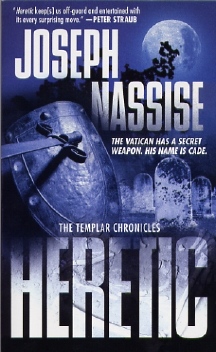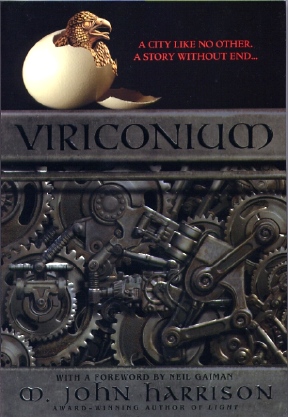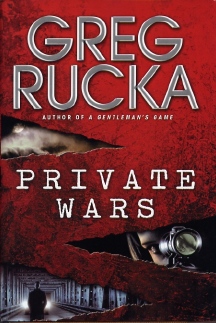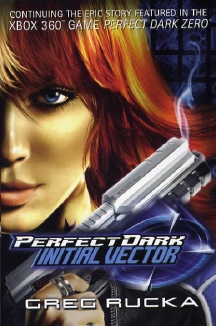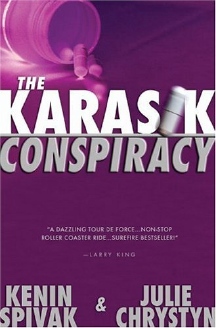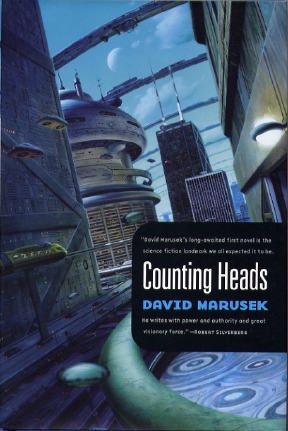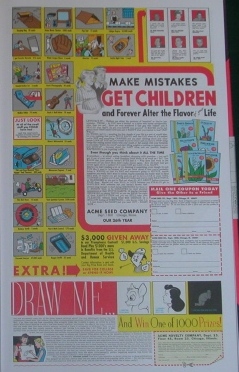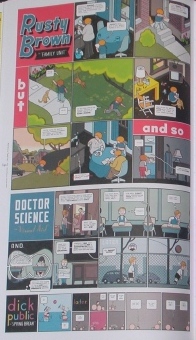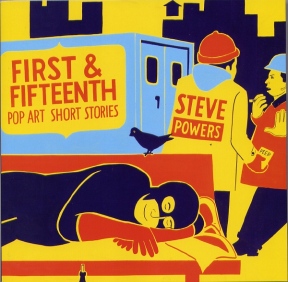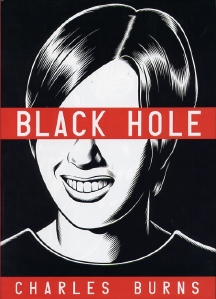|
|
|
This Just In...News from the Agony Column
|
10-28-05: Joseph Nassise's 'Heretic' |
|||
Into
the Fray
OK, so. Then again, there's always Joseph Nassise, who, with 'Heretic' (Pocket Books / Simon & Schuster ; October 1, 2005 ; $6.99) is entering into the fray. He's following in the footsteps of one of my favorite short-lived series of the 1980's, Daniel Rhodes' 'Next After Lucifer', 'Adversary' and 'Kiss of Death'. Alas, Rhodes only got out three novels before he disappeared from the map. One hopes that Nassise will get more, and there's reason to do so. Back when Rhodes was writing, the Knights Templar were hardly the pop attraction they are today, thanks to That Book. But now, the KT's are hot stuff and what Nassise has done is to take them to heart, take them seriously and send one up against a nicely imagined bit of Evil. Yes, with a capital E. This is the kind of Evil that doesn't just kill you dead. As 'Heretic' begins, the Knights Templar are under attack, their command centers under assault. And whatever is killing those within doesn't stop there. It's resurrecting them for its own purposes, and there's no reason to wonder why Cade -- called a Heretic because he's willing to get as nasty as that which he is combating -- is pretty sure a group of necromancers is about. OK, look if you read horror, you've got to know that necromancers are Evil-with-a-capital-E sorcerers who kill people dead and raise 'em on up again. Nassise offers readers a tightly plotted terse military horror thriller in 'Heretic'. There's not a whiff of pretension and not an ounce of fat here. Just the good old muscles, gore and the terror of a soul in danger. Should you be in need of the quick fix that only a good paperback horror novel can supply, then Nassise is your man. He's honed in on the kind of core material that can make a good series. There's little doubt that a second novel featuring Cade is in the pipeline. And there's lots of room for serial fiction in the horror genre. |
|
10-27-05: M. John Harrison's 'Virconium' |
|||
Bantam
Spectra Gets It Right
That's because Bantam has followed in the footsteps of the Victor Gollancz Masterworks series and published not just the core novels in a single volume, but instead, all the stories and novels. That means this volume titled 'Virconium' includes three complete novels; 'The Pastel City', 'A Scattering of Wings' and 'In Virconium', as well as seven additional short stories / novellas. Of course, such is the knowledge about this series that it won't be obvious to many that this single book has many sources. And once you enter, since your reality is effectively destroyed, you wont worry about such matters. You'll worry about...oh, the end of time. How imperceptibly tiny are our world and our time, which so often seem to eclipse all worlds and all times. You'll imagine yourself ground to dust, that dust swept out to sea, that sea dried up. All gone, all temporary. Only in every moment, every second, people, crawling on the skin of the world they know. The history of the novels is pretty interesting itself. The first novel, 'The Pastel City' showed up in 1971. Anyone here born back then? OK, good. You probably remember those times, buying the cheap paperbacks, the Michael Moorcocks, and if you were lucky, the M. John Harrison. Like Michael Moorcock and Jack Vance, Harrison writes science fantasy, which for this article, I'll define as fantasy that takes places in a far future where technology has made many of the tropes of fantasy possible. Magic in fact is that sufficiently advanced technology, and the ruinous landscape across which the characters walk was ruined by our distant descendents, bazillions of generations removed. Harrison's initial exploration of this world is pretty straightforward. But the underpinnings are not, and the technology that often remains hidden comes out to play. Still, with Harrison, there's always the trademark dense, poetic prose. He learned that early and he learned it well. Harrison's prose stylings color everything he does. They're powerful, colorful, and enveloping. This is the kind of reading you can luxuriate in, the kind that creates places in your mind you can visit after you finish the book. It would be nearly ten years before Harrison would return to Virconium in novel form. 'A Storm of Wings' arrived on the scene in 1980, at the dawn of a very different world. It's a bit denser and more contemplative, though no less compelling. Harrison's prose had continued an inward journey. 'In Virconium' was to follow two years hence, in 1982, and Harrison's inward journey showed no sign of slowing. Though he uses some of the plot motifs from the first novel, the entire work is closer to the characters and closer to the reader. There's still the smell of distant rot. But it's been overpowered by the smells of sweat, the stench of fear. Now, just to give readers an idea of the economy with which Harrison operates, we're rounding up on three novels in a large format trade paperback. Fantasy novels. Presumably, we should be on or around page 1,239. Instead at the finish of 'In Virconium', we're on page 341. Yes, that's right. Harrison pulls off three dense, complex and beautifully written novels in the space that some writers need to pull off a prologue. And I hope that has once again piqued your interest. What follows in this 'Virconium' collection, so-to-speak, are seven stories that add another hundred-something pages, offering readers everything they could want from 'Virconium' and more than they should expect from just about any writer in a single volume. The world, the future, the heart -- shot through a verbal imagination that is second to none. The obligatory introduction by Neil Gaiman, written in an airport earlier this year is quite engaging, and with luck just that name and that intro will snag a few more readers. I know that the folks over at Bantam / Dell / Spectra are pulling for Harrison, and they should be rewarded with sales of their books. Harrison is not an easy sell. His work is challenging in the best sense and certainly always unusual. And Spectra are to be heartily congratulated on this particular volume. The book design is outstanding. The pages are big and the book will stay open if you take it to the taqueria. At $16.00 you're getting some $50.00 worth of reading in a format that will last and will, most importantly, make reading a pleasure. Run, don't walk. So many my readers will have the great fortune to first encounter 'Virconium' in this beautiful, readable, inexpensive edition. You cannot ask for more. And you can't run fast enough. |
|
10-26-05: Greg Rucka Is Everywhere |
|||||||||
'Private
Wars', 'Perfect Dark' and Novelists For Hire
So how do those who are not superstar bestsellers earn a living? Well, writing may not be their day job. Or they may just write a boatload of books. This is apparently the strategy of Greg Rucka, who has two new titles in stores these days. His premium book, the one that is pure Rucka is 'Private Wars' (Bantam / Random House ; November 1, 2005 ; $24.00) This is the second so-called "Queen and Country" novel featuring Tara Chace. These novels are based on a series of Eisner-award winning graphic novels, to my mind a rather remarkable turn of events. But not unexpected, given the subject of today's sermon, er news article. So, this, the second Tara Chace novel, begins with an ominous three-page Glossary, most of which is acronyms like "DOO Duty Operations Officer", or "COB Close of Business". UO. ("Uh-Oh.") Then you get a map of Uzbekestan and its environs. Then you get a "Preoperational Background: Chace, Tara F." UO. UO. Then the novel begins, on page 11. OK, ("OK"), so this is the second novel in a series and if you read the first novel in a sort of daze, or your long-term memory is shot to hell (like mine) by the sheer volume of information going through it, then, these gentle reminders are actually kind of welcome. What follows is a straight-ahead thriller, with Tara called to extricate a good person from a bad place. I'll give Rucka this, he knows how to hook you into an adrenaline rush sort of narrative. Assuming that adrenaline is your drug of choice, and assuming that the very notion of the she's-a-runway-model-and-a-killer-spy-novel does not send you fleeing back to the safety of 'The Books of Blood', then Rucka is your man. Or Tara Chace is your women, depending on how you look at these things. Of course, all these new-fangled TWAT ("The War Against Terrorism") novels do depend ever so much on the longevity of TWAT. And yes, while we've been assured that War is Peace or Peace is War, or something vaguely (ever so vaguely) along these lines, it may prove that TWAT could come to a grinding and unexpected halt. There's good reason to believe that the end of the Cold War resulted in hundreds if not thousands of casualties – all those novels that depended on the Cold War continuing on until the Apocalypse. (And of course, there are any number of novels and novelists who will have to learn to do something else should that highly anticipated event or series of events come to pass.) With the release of every TWAT-themed novel, the question in the back of the mind of every enquiring reader is, "How many more are out there, in the ether, waiting to be printed?" As the buffer becomes ever fuller, the danger increases. Someone could even write a thriller about it – desperate to keep TWAT alive so that they can continue to write about it, writers band together to form their own band of un-catchable terrorists, and who better to write about them? Now, hold that thought.
No, I AM sitting down and that should give you an idea of how dizzy (no "t" in that word, really) I am. You want even more dizzy? Read the chilling premise of this book and I mean that -- the novel does have a very chilling premise. In the year 2020, corporations control the world. So, nothing's changed. Until a family dies of the flu in Canada. Then another family. Then another, and faster than you can say "1918 Pandemic", Canada has sneezed in our direction. One man has the blood that's the cure. So, Rucka's written a novel for hire, an admirable accomplishment. Apparently, the world needs these novel-length prequel advertisements for video games. Because the people who make video games are making SO MUCH MONEY that they can frankly bathe in it. And that means that they can commission a novel from the man described as one of the "top 3" writers at DC Comics. They're probably bathing in money over at DC as well, while at Random House and Tor, well...Let's say they're happy for the luvin' that the non-existent Xbox 360 is sending their way. But wait! Rucka doesn't need to work for a lightweight industry like the Video Game industry. They're not the only ones rolling in money/commissioning novels these days. In a story so bizarre, it sounds like something I made up three paragraphs ago, it's recently come to light that the pharmaceutical industry is commissioning thrillers to make itself look good. Here's a link to the Globe Mail story, but the bottom line is this. In December, readers can look for 'The Karsik Conspiracy' by Kenin Spivak and Julie Chrystyn from Phoenix Books, and the publicity surrounding the book is pretty much guaranteed to sell a few copies. Sometime late last year, a lawyer who either was working for or claimed to be working for PhRMA ("Farma", Pharmaceutical Research and Manufacturers of America) approached Phoenix Books. He told Spivak that PhRMA, the powerful Pharmaceutical Lobby, wanted to commission a thriller in which terrorists poisoned drugs available from cheaper Canadian websites, resulting in thousands of American deaths. The idea was to entertain and educate the thriller-reading American public as to the perils of getting these cheaper drugs. PhRMA would have the final right of rejection if they didn't like the novel.
Alas, when the manuscript was turned in, they weren't happy. It was, they were surprised to find out, a transparent and cheesy advertisement for PhRMA. They thought folks might figure this out, and so tried to kill the novel. In the process, they asked the writers to sign documents stating that they would never, ever say anything bad about the pharmaceutical industry. This turned out to be a mistake. Gosh! Of course, PhRMA disavows any knowledge of the writers' mission impossible. The tapes have been burned in their recorder. Furthermore, they've made moves to make sure it never happens again. Say what? And the writers weren't happy with their first draft, either. They've rewritten it, and added a new conspirator: a pharmaceutical company, eager to scare consumers from buying imported Canadian drugs. It's a better novel, they say, and Blair apparently has a talent for editing fiction. Who would have guessed? And no, I am not making any of this up. So it comes to this: the new frontier for advertising is the novel. Look for product placement, a concept forged in charity by name-brand authors selling off the right to have characters in their bestsellers tagged with a name picked by the highest bidder. Look for novels about the joys of driving big-ass American cars, of eating fast food, of living fast and dying young while working 75 hours per week. Lookit that novel, sitting there on the shelf. Is that novel a novel novel? Or is it a work of art that, purely by coincidence, suggests the joys of using one product or another? All these questions will be answered, of course, in The Agony Column® video game for Sony Playstation 3. |
|
10-25-05: David Marusek is 'Counting Heads' |
|||
Some
Are Attached
'Counting Heads' takes as its starting point Marusek's acclaimed novella 'We Were Out of Our Minds With Joy'. First published in Asimov's magazine in November of 1995, it was a story that made 'The Year's Best Science Fiction', and was republished in the Ace Anthology 'Nanotech' in 1998. Oh, the heady joys of early nanotech fiction. When we could, with a wave of our hands, do anything. Damn, if nanotech didn't turn everyone into gray goo*, it would turn us all into science fiction writers. Given that there's no excess of gray goo (in fact, none whatsoever) I'm guessing that we're all now writing science fiction. Happily for us, David Marusek is amongst those non-gray-goo SF writers, and even more happily for us, he's published. Not an easy feat in a world that can describe nanotech but not actually build it. Yet. Nanotech comes to mind with Marusek, because, well, 'Counting Heads' is set in a world rife with the stuff. And it's a big, bold beautiful tomorrow, some forty years after the events of 'We Were Out of Our Minds With Joy'. Apparently, having recovered from that state, we've awakened to a utopian world. Well, it's utopian if you're rich. Then, everything is made for you by nanotech replicators, your work is done for you by human clones and robots, and you can live until you're bored shitless thanks to Life Extension therapies. Of course this all presumes you can Make the Payments. Apparently this isn't true for most folks in Marusek's utopia. For them, the whole shebang is something of a dystopia. As far as the rich are concerned, the poor can just go away. Yes, it's true, that's a good description of the world today. And that's why we read science fiction. We do like the ooey-gooey tech, we like the visions of the flying pigs, er cars, we like the huge conflicts and resolutions it offers. But mostly what it offers is a skewed vision of reality, heightened to the point where things that are unclear because we see them all damn day every damn day are made crystal clear and explicitly comprehensible. So those disposable poor of the present are getting disposed of in Marusek's future. It's pretty easy to do. Without much in the way of public debate, you just start pumping oil out of the Alaskan wilderness, no, I mean, lower the canopy over Chicagoland that protects it from all the nasties we in the present are in the process of unleashing on the world. And on the day that happens, damn if the heads don't start rolling. Of course, this being the future and all, you can freeze 'em, collect 'em and turn them in for valuable prizes. Or scan them for valuable data, especially if it's the head of a leading citizen like Eleanor K. Starke. Now here's where I offer unasked-for advice to anyone writing copy for dust jackets, websites, book reviews, whatever. Should the word "ragtag" come to mind, stuff it into a glass bottle filled with gasoline, light it and toss it at the nearest competitor. When I see the word "ragtag", I hear a voice-over for a terrible made-for-SciFi-channel movie. If you have a spell checker, set it to detect "ragtag" as a misspelled word. If you are part of a ragtag team, re-consider your commitment to be a joiner. The life of a loner offers many advantages. One of them is not being asked to hunt down cryogenically frozen heads. Should you be the type who is known as non-participatory, should you be known as irascible, then those on a mission to find a frozen head are unlikely to want you along. You might not be a character in Marusek's fiction, but let's face it. His future really doesn't seem all that appealing, once you get, you know, acquainted with the ins and outs. On the other hand, here in the present, being an irascible loner offers you the greatest advantage of all. Youre likely to have the time to pick up Marusek's remarkable debut. Near-future frozen head mayhem. Bad things happening to good people. Your ability to enjoy a book about nanotech instead of being consumed by a swarm of micro-robots. These are a few of your favorite things. Or, at least, they should be. And maybe Marusek's novel will be as well. As long as you're on the right side of the reading it / not reading it divide. |
|
10-24-05: Charles Burns' 'Black Hole', Steve Powers 'First & Fifteenth', Chris Ware's 'Acme Novelty Library' |
|||||||||||||||||
|
Graphic Novels Forge Fear-Inducingly Ahead This box couldn't be for books, I thought, as I arrived home. This box is too big for books. Maybe my wife has ordered up some more shirts from Lands End. But like a kid in a candy store, my hopes are rocketing. What could be inside here, I wondered. Pantheon, Pantheon...Hmmm. OK. Dan Clowes' 'Ice Haven' came to me via Pantheon. And now a huge box o' more books, featuring some stuff that literally blew me away. You know, I have this deep-seated desire to sort of diss the whole graphic novel phenomena. Look, I just betrayed myself! I called it a "phenomena". It's not. Certainly not when you look at the stuff I got late last week. Yes, my purist bent, my fussy streak, they both want me to dismiss this as a passing phase. Something we can and should "get over" or "get past". But the fact of the matter is that every time I try to do so, I'm facing with something positively amazing, like 'Ice Haven'. A bombshell in a beautiful package. Or in this case, three bombshells. Wowsers, no more dismissin' for me.
But 'The Acme Novelty Library' is really much more than the Sunday comics transmuted into art. The real model here in some cases at least, seems to be 'Boy's Life', you know, the magazine you used to get when you were a Cub Scout? I dont know if it's in production today, but back in the day, I remember 'Boy's Life' quite vividly, and I remember the style of the advertisements, which Ware captures to perfection, even as he's ruthlessly skewering their content. Yes, I was one of those kids who sold personalized Christmas cards based on an offer out of the back of that magazine, and yes, I did earn the walkie-talkies. Of course, Ware has something a bit more sophisticated on his mind. That's why he's got an advertisement to 'Make Mistakes Get Children and Forever Alter the Flavor of Your Life.' He nails the style so perfectly that it's hard not to choke up, because what he says resonates back to your childhood as well as to the, well, let's call them "new challenges" your own children may face.
Whether or not you need shirts from Lands End, the chances are that you need 'The Acme Novelty Library'. And the really, really good (or bad, depending on your cash-flow-vs-compulsion quotient) news? This is just he latest version; there are many predecessors. In fact, I just randomly opened to a strip featuring "Quimby Mouse" that summarized one potential reaction to the possibilities in here. In it, Quimby went to the video rental store, and rented some movies. In the following panels, he's in a retirement home, feebly waving his hands. I can see that happening with this series. You probably shouldnt go that deep. But maybe it is nice to know that drowning is at least possible.
You've got to hand it to Powers. He's come up with something very unique, a wildly weird form that allows him to get at ideas, at people, at characters, and at storytelling in a manner nobody else has done yet. Should you pick this book up in the store, you'll know immediately if it's for you. Powers is the Iggy Pop of graphic novels. He kind of hits you over the head with concrete, in this case, the concrete you might expect to find these images plastered upon. But he makes some very nice not-so-blunt points. Witness the first story, where it looks like a heavy-handed superhero lampoon, at least until you get to the panels where the character's flaws are revealed. Then it ain't so funny. Powers adds a nice sting to his work, to take it beyond sloganeering and into another realm entirely. He's write to describe the works here as short stories, but theyre not like anything you've ever "read" before. And reading is not necessarily the best description of how you experience these works. 'First & Fifteenth' is a lot like an art museum exhibit -- with a plot.
Given the strong nature of his images, you wouldnt think he's be particularly likely to churn out something as straightforward yet as complex as 'Black Hole' (Pantheon Books / Random House ; October 18, 2005 ; $24.95). But there it is. With no numbers of the super-high-quality, thick pages, it's hard to say exactly, but this looks to be about 400 pages of graphic novel. Moreover, it really pumps up both aspects of that oft-bandied term. It's very graphic and yet, readers will find it very novelistic.
Or, might turn you into a monster. Nobody seems to know. He captures the world of teenagers and twenty-somethings adrift in a world of casual sex and drug use, a world that seems both surreal and seedy. Trust me when I saw that this book is creepy and horrific. I havent seen or read anything that gave me the shivers like this in a long, long time. 'Black Hole' should definitely be on any list of the best horror works of this year. Burns's vision is like some illness itself, an illness that would taint everything you taste with the reek of sour milk. But this isnt pure gross-out material. In fact, there's very little of that here; just enough to keep your skin crawling. Mostly, what's disturbing is the unvarnished portrait of human animals in all their sweaty, smelly glory. Oh the horror of us. As if we need a reminder. But it seems we do need reminding, or at least, we enjoy those reminders of our own grosser nature. And these three graphic novels do a pretty damn good job at providing glimpses of our Big Ugly. And yet each of them is big-time beautiful; beautifully written, imagined, illustrated and even printed. Moreover, theyre attractively priced. For now, at least. Wait until the collectors get a hold of these things. Now that, that will be ugly. |
